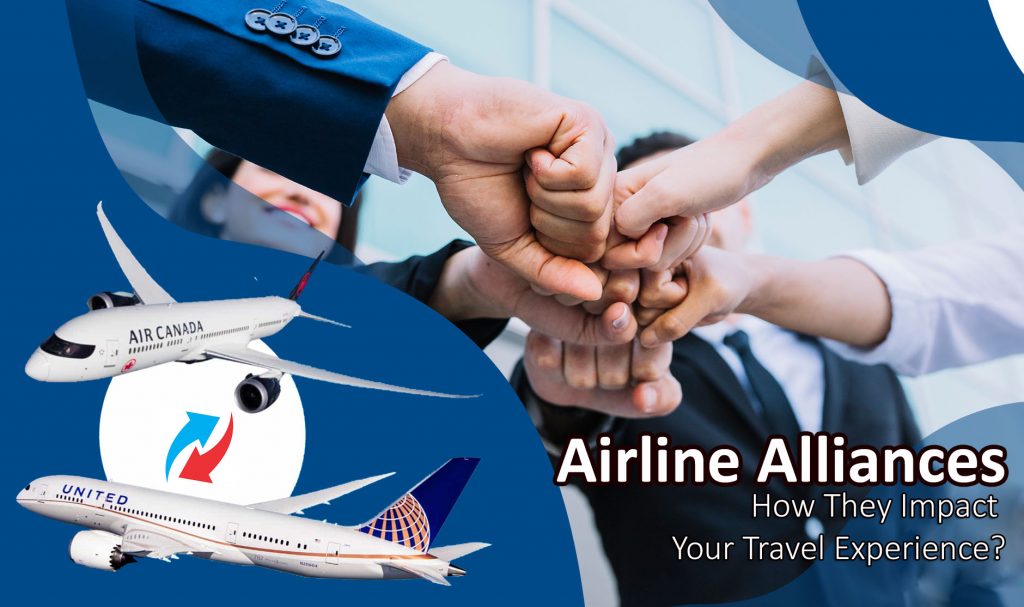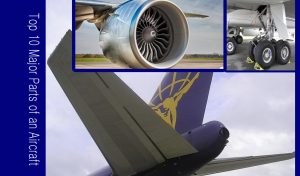We know Airline alliances play a significant role in the aviation industry. And can have a substantial impact on your travel experience. An airline alliance is a cooperative agreement between two or more airlines to work together in various aspects of their business. The primary goal of these alliances is to enhance network connectivity, provide more extensive route options, and improve the overall travel experience for passengers. Here’s how airline alliances can impact your travel experience:

The three major airline alliances are:
- Star Alliance: Air Canada, Air China, Air India, Air New Zealand, ANA, Austrian Airlines, Avianca, Brussels Airlines, Copa Airlines, Croatia Airlines, EGYPTAIR, Ethiopian Airlines, EVA Air, Lufthansa, LOT Polish Airlines, Scandinavian Airlines, Shenzhen Airlines, Singapore Airlines, South African Airways, Swiss International Air Lines, TAP Air Portugal, Thai Airways International, Turkish Airlines, United Airlines, and Uzbekistan Airways.
- SkyTeam: Aeroflot, Aerolíneas Argentinas, Air France, Air Europa, Air Serbia, China Airlines, China Eastern Airlines, China Southern Airlines, Czech Airlines, Delta Air Lines, Garuda Indonesia, Kenya Airways, KLM Royal Dutch Airlines, Korean Air, MEA, Middle East Airlines, Saudia, TAROM, Vietnam Airlines, and Xiamen Airlines.
- Oneworld: American Airlines, British Airways, Cathay Pacific, Finnair, Iberia, Japan Airlines, Malaysia Airlines, Qantas, Qatar Airways, Royal Air Maroc, Royal Jordanian, S7 Airlines, and SriLankan Airlines.
These alliances offer a number of benefits to travelers, including access to a wider range of destinations and flights, seamless travel between member airlines, and reciprocal loyalty benefits.
How Airline Alliances Impact Your Travel Experience?
Airline alliances can impact your travel experience in a number of ways, both positive and negative.
Positive impacts:
- More destinations and flights: Airline alliances allow members to offer their passengers a wider range of destinations and flight options than any one airline could on its own. This is especially beneficial for travelers who need to fly to multiple destinations or who have tight schedules.
- Seamless travel: Alliances typically coordinate their schedules and policies to make it easier for passengers to transfer between flights. This can include things like through-checking baggage, providing priority boarding for passengers with connecting flights, and offering rebooking assistance in the event of a delay or cancellation.
- Reciprocal loyalty benefits: Members of airline alliances often allow passengers to earn and redeem miles on all member airlines. This gives passengers more flexibility and choice when it comes to redeeming their rewards.
- Reciprocal lounge benefits: Many airline alliances offer passengers access to the lounges of all member airlines. This can be a great way to relax and recharge before or between flights.
- Reciprocal elite status benefits: Members of airline loyalty programs may also receive reciprocal elite status benefits when flying on member airlines of their alliance. This can include things like priority check-in and boarding, access to airport lounges, and baggage fee waivers.
Negative impacts:
- Higher fares: Some critics argue that airline alliances can lead to higher fares for consumers. This is because airlines may be able to coordinate prices and reduce competition.
- Less choice: Alliances can also lead to less choice for consumers, as they may have fewer airlines to choose from on a given route.
- Reduced service quality: Some critics argue that airline alliances can lead to a reduction in service quality, as airlines may be less likely to compete with each other for passengers.
Overall, the impact of airline alliances on your travel experience will depend on a number of factors, such as the specific airlines involved, the routes you are flying, and your individual travel preferences. However, in general, airline alliances can offer a number of benefits to travelers, such as more destinations, flights, and loyalty benefits.
Here are some additional tips for making the most of your travel experience with airline alliances:
- Choose the right alliance for your travel needs: Consider the destinations you fly to most often and the airlines that operate the most flights on those routes. If you have a favorite airline loyalty program, see if that airline is a member of an alliance.
- Book your entire itinerary on a single ticket: This will make it easier to transfer between flights and will give you peace of mind knowing that your entire itinerary is covered by one ticket.
- Take advantage of reciprocal loyalty benefits: Be sure to enroll in the loyalty program of each airline that you fly with. This will allow you to earn and redeem miles on all member airlines of the alliance.
- Use reciprocal lounge benefits: If you have access to airport lounges, be sure to check to see if your alliance offers reciprocal lounge benefits. This can be a great way to relax and recharge before or between flights.
- Be aware of elite status benefits: If you have elite status with one airline, be sure to check to see if you receive reciprocal elite status benefits when flying on member airlines of your alliance. This can include things like priority check-in and boarding, access to airport lounges, and baggage fee waivers.
By following these tips, you can make the most of your travel experience with airline alliances and enjoy the many benefits they offer.









